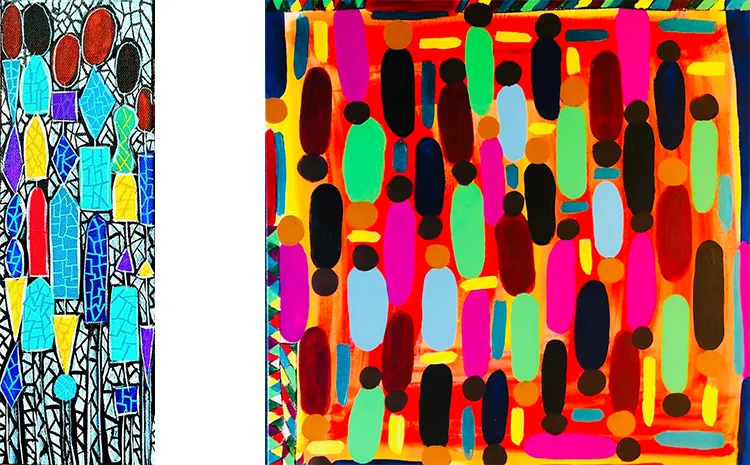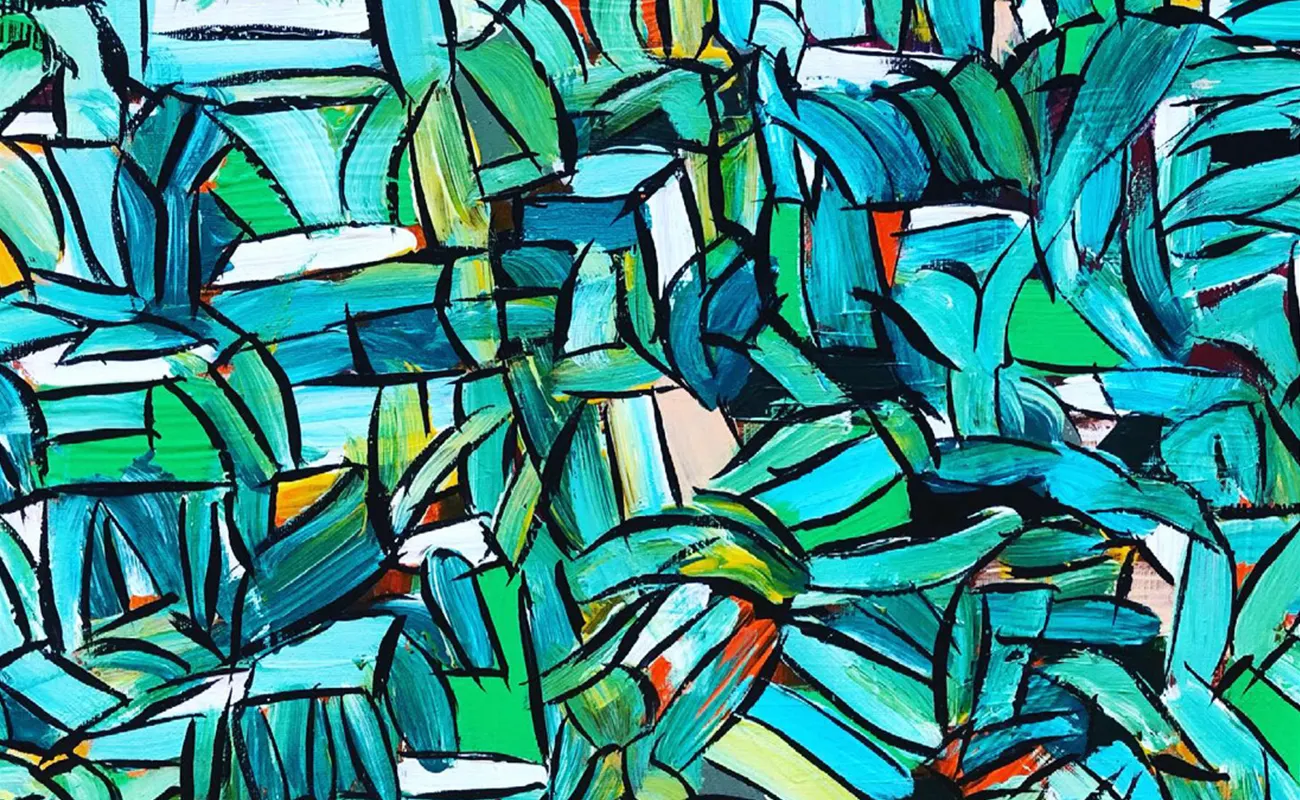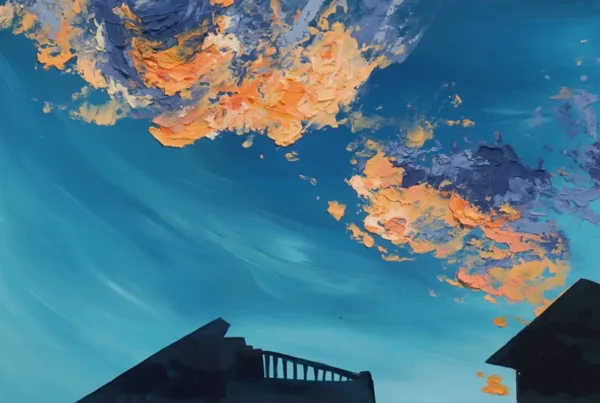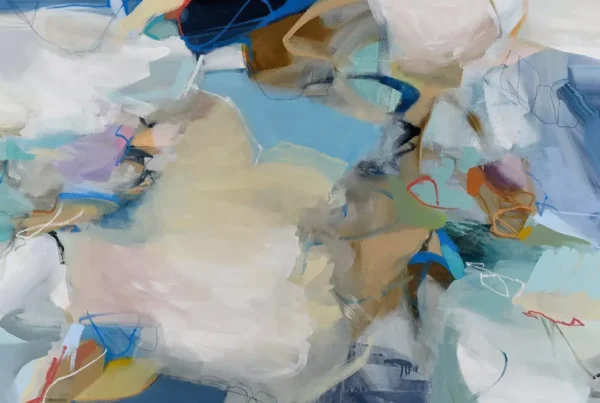“Art wasn’t just an outlet; it became a form of healing, a way to ground myself and redefine my sense of self.”
A Journey of Resilience and Self-Discovery
Marguerite Copeland’s artistic evolution is deeply intertwined with her personal journey of perseverance and self-reclamation. Born in Philadelphia and raised in Woodbridge, Virginia, she cultivated a strong academic foundation, attending Oldfields School before earning a degree in African and African American Studies, with a minor in Peace & Social Justice, from Wheaton College in Massachusetts. Now based in New York City, she has dedicated the past decade to youth development in nonprofit spaces, creating programs that emphasize social justice, data analytics, and leadership. This commitment to mentorship and empowerment seamlessly aligns with her artistic practice, as both realms revolve around self-expression, personal growth, and resilience.
Her entry into art was not merely a pursuit of passion but a necessity—an avenue for self-discovery in the absence of external support. Copeland found herself needing guidance she did not receive, and in that solitude, she turned to creativity as both a sanctuary and a form of self-affirmation. Through art, she reclaimed her voice, learning the invaluable lesson of preserving her energy for those who truly appreciate it. This sense of self-preservation and unwavering determination is evident in her work, which serves as a visual representation of strength, struggle, and triumph.
Each of her pieces tells a story of transformation, reflecting her steadfast principles and unyielding spirit. Copeland’s art is a testament to the process of overcoming hardship, carving out space for oneself, and embracing the power of one’s own voice. Her work resonates with those who have experienced similar journeys of self-reclamation, inviting viewers to find their own narratives within her abstract compositions.
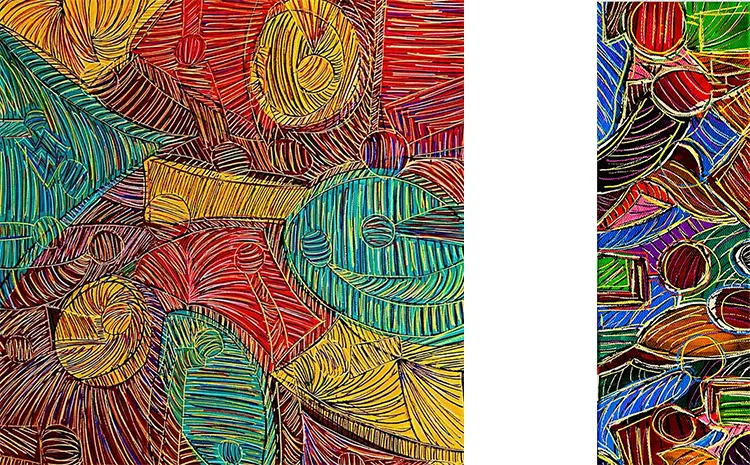
Marguerite Copeland: Art as Healing and Rebirth
Copeland’s decision to fully embrace her artistic career was catalyzed by a deeply personal and painful experience—a betrayal by her own family that left her feeling unsafe and unmoored. In the midst of this turmoil, art emerged as her refuge, a means of regaining stability and redefining her sense of self. This pivotal moment reshaped her relationship with creativity, transforming it from a casual pursuit into a vital component of her daily life. Rather than allowing adversity to consume her, she used it as fuel to deepen her commitment to artistic expression.
Art became more than just a passion; it was a form of survival and healing. Each brushstroke served as a reclamation of control, a step toward rebuilding a sense of security and personal agency. The act of creating allowed her to channel her emotions into something tangible, giving her a sense of purpose when everything else felt uncertain. Her abstract compositions, often layered with intricate details and unexpected elements, reflect this emotional depth and the ever-changing nature of healing.
Her journey into art was not one of formal training but of raw necessity, making her work deeply personal and profoundly introspective. By sharing her process and the experiences that shaped it, she invites viewers to engage with her art beyond aesthetics, encouraging them to see it as a reflection of their own struggles and triumphs. Copeland’s work stands as a powerful reminder that even in the face of profound pain, creation can be an act of defiance, renewal, and empowerment.
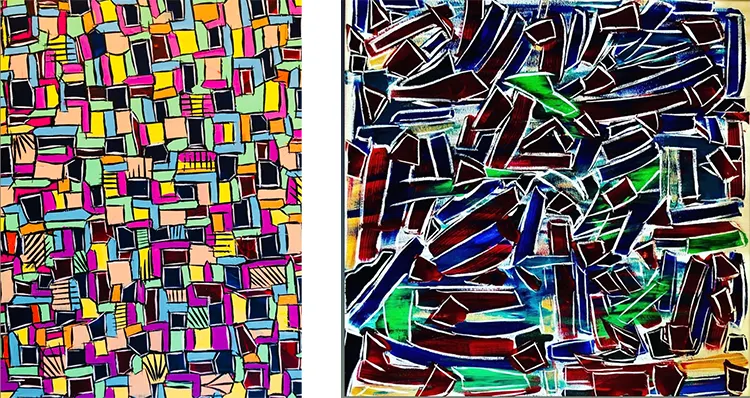
The Freedom of Abstraction and the Power of Interpretation
Copeland’s artistic style is rooted in abstraction, a medium that allows her the freedom to create pieces that evolve organically throughout the painting process. Each work typically begins with a sketched idea—an initial vision that serves as a foundation before the piece transforms on the canvas. As she layers colors, textures, and shapes, the painting takes on new dimensions, sometimes diverging from the original sketch but always maintaining an underlying connection to it. This fluidity is what she finds most exciting about abstraction—it grants both artist and viewer the ability to discover new interpretations over time.
Her work explores themes that extend beyond representation, focusing on movement, texture, and emotion. Rather than capturing precise figures or scenes, she seeks to convey energy and atmosphere, allowing each piece to speak in a language that transcends rigid definitions. The result is a body of work that encourages individual interpretation, where each viewer brings their own experiences and emotions into the conversation. This open-ended dialogue between artist and audience is central to Copeland’s creative philosophy.
One of her most significant pieces, Hidden Beauty, exemplifies this approach. A subdued yet striking composition, it draws attention to the face while allowing surrounding darkness to play a crucial role in shaping perception. The work challenges viewers to consider what remains unseen, what is intentionally obscured, and how beauty exists even within mystery. By inviting introspection, Copeland ensures that her work remains deeply personal yet universally resonant, emphasizing the power of perspective in art and in life.
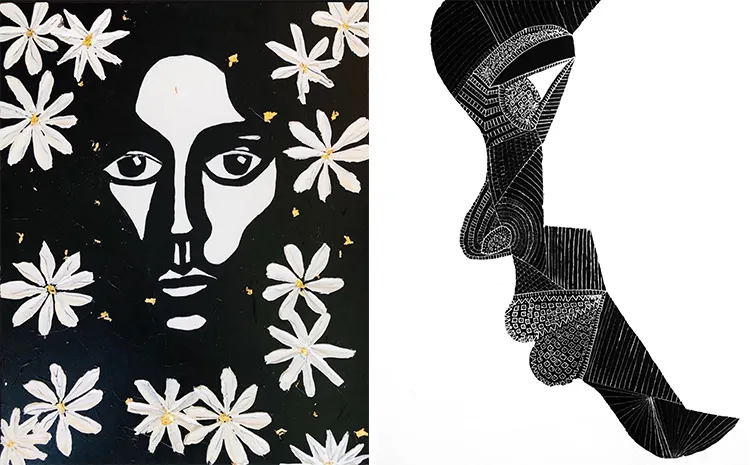
Marguerite Copeland: Immersing Viewers in a World of Sound and Vision
For Copeland, art is not confined to the visual—it is an immersive experience, one deeply intertwined with sound and atmosphere. Music is an essential component of her creative process, setting the emotional tone for each session. Whether she is locked into a single artist’s discography or letting a shuffled playlist dictate the mood, music creates a rhythm that keeps her engaged and focused. At times, her workspace transforms into a private concert, where she loses herself in both sound and paint, allowing the two to merge into a seamless creative flow.
This ability to fully immerse herself in the process makes distractions almost nonexistent. Once she is in her artistic zone, time becomes irrelevant, and the outside world fades away. The connection between movement, music, and painting enhances the organic nature of her work, reinforcing her belief in art as an intuitive and instinctive process. This synergy is what makes her workspace a sacred space, where creativity flows without interruption.
Looking ahead, Copeland envisions taking this immersive experience beyond her studio. Inspired by large-scale interactive art installations, she dreams of creating an environment where viewers can step inside her work—where her paintings are not just observed but physically experienced. The idea of transforming her abstract compositions into a fully enveloping world excites her, offering a new way for audiences to connect with her art on a deeper, more sensory level. By expanding beyond the canvas, she hopes to redefine the boundaries of engagement, making her work not just something to see but something to be a part of.
